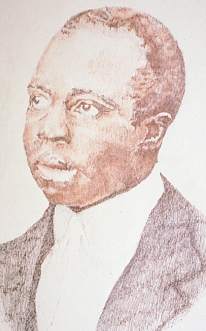RAGTIME: SCOTT JOPLIN (1868–1917)

Ragtime, a precursor of jazz, was a style of piano playing developed by black musicians playing in bars, dives, and brothels. In the early 1900s, when phonographs were still new, ragtime became enormously popular throughout America by means of sheet music and piano rolls for mechanical (“player”) pianos. The music resembled march music, but while the left hand played strictly on the beat, the right hand syncopated the rhythm in a crisp, cheerful way. “To rag” meant to play in a syncopated style; “ragging” evolved into jazz syncopation.
Scott Joplin was the leading rag composer. The son of an ex-
“Maple Leaf” was followed by “The Entertainer” and many other rags. They stand out for an elegance that might not have been expected in this simple and commercial genre. Joplin even published a small treatise on ragtime, warning those who would race through his pieces: “Never play ragtime fast at any time.” And to those who saw ragtime as a style too lowbrow for their tastes, he wrote: “Syncopations are no indication of light or trashy music, and to shy [i.e., throw] bricks at ‘hateful ragtime’ no longer passes for musical culture.”
Joplin’s evident desire to break into cultivated musical circles was not realized. After he moved to New York in 1907 he gradually faded from the limelight. He wrote two operas, the second of which, Treemonisha, received a single unstaged performance in 1915. His death in 1917 was noted by few, but at last, in 1972, Treemonisha was fully staged and recorded.